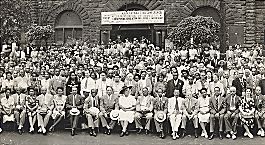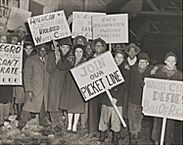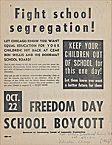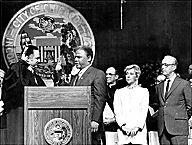| Entries |
| C |
|
Civil Rights Movements
|
Agitation for civil rights has been a regular feature of the Chicago scene, and African Americans have been the leading—though not the only—insurgents in this fight. It is difficult, however, to speak of a civil rights movement in Chicago before World War II.
Unlike white immigrants, African Americans had to battle for legal recognition of their citizenship rights. Before the Civil War Illinois was a free state, but its laws prohibited the immigration of African Americans and voting by blacks. And even though Chicago was a center of antislavery activity, city schools and places of public accommodation were racially segregated.
Black Chicagoans resented these restrictions. In 1870 they gained the right to vote, in 1874 they hailed a state law forbidding segregated education, and a decade later they successfully urged the state legislature to endorse a sweeping civil rights measure which provided “that all persons ... shall be entitled to the full and equal enjoyment of ... inns, restaurants, eating houses, barber shops, theatres, and public conveyances on land and water and all other public accommodations.” After a legal challenge in 1896, the Illinois legislature more directly stated the scope of the Illinois Civil Rights Act of 1885.

|
By the early twentieth century, race relations in Chicago had become more tense than they had been in over a generation. Out of this climate, which was part of a nationwide trend, emerged the Chicago branch of the National Association for the Advancement of Colored People. Founded in 1910 by black and white racial progressives, the Chicago NAACP championed a vision of a just society, even if other groups eclipsed its efforts during the 1910s.

|

|
The broad range of insurgency in the 1930s and 1940s was impressive, but it represented less a cohesive movement than a series of distinct efforts to secure more opportunities for African Americans. In the early 1960s, however, unequal educational opportunities and the imperial style of school superintendent Benjamin Willis spurred black parents, especially on the far South Side, to protest public school policies. The emergence of local, grassroots movements laid the foundation for the great school boycotts of October 1963 and February 1964 in which 400,000 students missed school.
A new organization, the Coordinating Council of Community Organizations (CCCO), founded by the Chicago Urban League, the Chicago NAACP, and a number of other groups, sought to harness the emerging protest energies. By 1965, CCCO comprised 40 affiliates, including largely white groups like the Catholic Interracial Council and more militant black groups like Chicago CORE. During the summer of 1965, CCCO staged almost daily marches against Willis and segregationist school policies. Never before had Chicago experienced such a dramatic and sustained demand for racial justice.

|
By mid-1967, however, the Chicago Freedom Movement was over, and CCCO was disintegrating. The Black Power impulse—which questioned interracial activism and nonviolent direct action—pulsated through black Chicago. As the rise of the Black Panther Party and the urban uprisings of 1966 and 1968 attested, a new protest universe had emerged. Only the regular mass meetings of Jesse Jackson's Operation Breadbasket, which later became Operation PUSH, and the deep commitment among African Americans to Harold Washington's mayoral campaigns in the 1980s carried on the movement qualities of the first half of the 1960s.
The Encyclopedia of Chicago © 2004 The Newberry Library. All Rights Reserved. Portions are copyrighted by other institutions and individuals. Additional information on copyright and permissions.